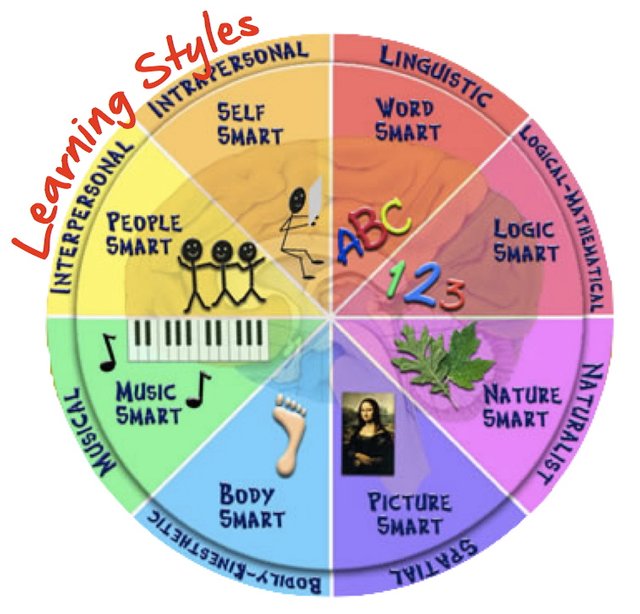Educators' Perspective - Learning From Students
Hi there. In this post, I give my take on educators, teachers, tutors and coaches learning from students. A lot of educational topics mention about how students learn from teachers, learning tips for students and the like. Here, I want to look at it from the other way around.

Sections
- Personality Types Of Students
- Learning Styles Of Students
- Students' Work Ethic, Motivation & Effort
- Notes
Personality Types Of Students
I am not sure about you but I think personality types are often overlooked in general (not just in teaching). Educators deal with many students with a variety of personalities. Some students are quiet, some are loud, some speak their mind, some are hard-working, and some are lazy/unmotivated (unfortunately).
The Myers-Briggs Type Indicator features a lot of questionnaires which determine one of 16 personality types for a individual. Half of the sixteen personality types belong to introversion and the other half belong to extraversion. People who are extraverts find and gain energy by being around people. Introverted people gain energy in solitude while being deep thinkers. Introverts do socialize from time to time but it can be exhausting so they need to "recharge their batteries" in quiet areas.
There are more types within the Myers-Briggs Type Indicator. These include:
- Sensing vs Intuition (S vs N)
- Thinking vs Feeling (T vs F)
- Judging vs Perceptive (J vs P)
Keep in mind that personality types are not fixed. Personalities can change over time and also depending on mood, energy, nutrition, state of mind, etc.
Being able to identify students' personality types can help in developing custom advice and solutions for students. If someone is a quiet thinker type, let him/her think and discover the solution(s) and if someone is a more outgoing type, let him/her talk it out and find the solution(s).

More details on Myers-Briggs can be found through this reference link or through online searches.
Learning Styles Of Students
When it comes to the learning styles of students, one should recognize that every one is different and has their own preferences, dislikes, strengths and weaknesses. This section briefly looks at the learning styles of students.
Different people and places have their own views and definitions of learning styles. Here is one of them that I am presenting here.

According to the image above, there are three learning styles. These three are visual, auditory and tactile. It does not mean that students are only one of these three. You may have students who are mostly visual and a little bit auditory and tactile. Other students may be more tactile than auditory and visual. Some can learn with two of the three styles or all three. In ideal settings, educators should aim to have their lessons appeal to all three learning styles.
This other summary image on learning styles looks at the different types of smarts.

Students' Work Ethic, Motivation And Effort
Working with students allows educators to see how students work towards their educational goals. Regardless of the students' personalities and how they learn, you can see a sample of their work ethic, motivation and effort they put.
Those with low effort or motivation do not have much desire to learn or do anything. Symptoms include head on desk, yawning, the sleepy head look, hand on head tilted sideways and looks of boredom.

Those with high level of motivation really want to get work done and progress towards their goals. Students of this type have good work habits, they're organized, they're focused and they limit distractions. You may find that getting work done is not necessarily influenced by IQ or intelligence (alone).
Some of the symptoms from the students are easy to spot while some may not be noticeable or would be shown for a brief moment. Knowledge of body language and reading people is an asset here.
Notes
- Everyone learns differently.
- Some students are more suited to certain subjects/fields (i.e. arts, cooking, math, sports) than others.
- Educators should have backup plans when the one size fits all teaching strategies do not work. Adaptability is key.
- Some subjects, fields and occupations require certain personalities, learning styles and thinking. As an example, mathematics past the high school level is highly visual, auditory and not so much tactile.
- Motivation within students can change over time depending on a variety of factors.
Hey DK, I believe most scientists in the education community disregard learning styles nowadays due to the fact that no one has ever designed a rigorous study that shows using learning styles leads to improved learning in students.
Now, that's not to say we shouldn't utilize different modalities while teaching (I definitely use visual, auditory and tactile aspects when I can and it makes sense). I think it's moreso making sure that we don't disadvantage students by placing them in a particular box. Cheers, and thanks for an insightful blog post!
Thank you for your comment @pencentre.
I think it's also that some educators want students to learn things a certain way because it's the "best way". There are cases where you can learn the same thing in different ways (Different ways to get the same solution idea). I have heard of students in university claim that a professor is
smart but can't teach.The ideal scenario is not placing students in a particular box. With larger classes, I think that this is very difficult to do. In this case, the students need to be self-reliant and learn on their own as teachers/educators can't help everyone.
Totally agree with you! Some of my best moments as a math teacher have come from solving the same question in a couple different ways (even when teaching a large class like calculus).
It takes a lot of mathematical knowledge to know how to solve a math problem, but there is something else special that sets the good teachers apart from the average teachers. And I think you hit the nail on the head when you said "there are cases when you can learn the same thing in different ways". I do believe that it is important for educators to know these various ways, know how to teach these different ways, and know how to be able to connect them.
An extra 'smart' could be 'street smart'? Some children will bring to the classroom a range of experiences way beyond that of their peers or perhaps even their tutor. What have been your experiences with children such as those?
'Street smart' is a different type of smart in my opinion.
I know of many children who have had experiences that I have never had. Examples include ski trips, travels, dining experiences. When children share these experiences, you listen, learn and acknowledge their experiences and comment accordingly.